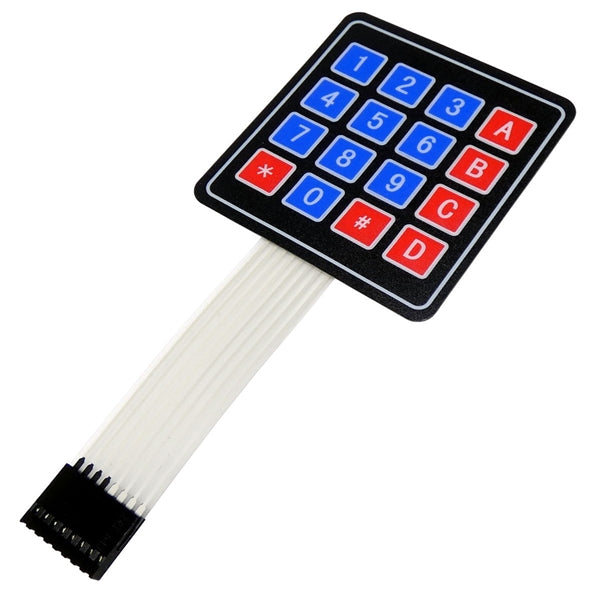Discover Just How Membrane Switches Feature and Their Function in Modern Electronics
Membrane Switches represent an advanced integration of technology and style within the realm of contemporary electronic devices, serving as crucial interfaces in countless tools. Comprehending the ins and outs of Membrane switch capability and their wider effects in boosting customer experience invites additional exploration right into their design, benefits, and the ingenious advancements shaping their future in modern technology.
What Are Membrane Switches?

Membrane switches are distinguished by their longevity and resistance to ecological elements, such as dirt, dampness, and severe temperature levels. They can be personalized with different graphics, shades, and responsive feedback options, improving individual experience while keeping visual allure - membrane switches. Moreover, the consolidation of printed circuits permits smooth integration into gadgets, enhancing total performance.
The flexibility of Membrane switches is evident in their capacity to sustain both easy and complex control functions. They can integrate features such as LED signs and touch-sensitive modern technology, providing to certain user demands. As technology remains to develop, Membrane Switches stay necessary for enabling user-friendly and efficient individual interfaces, thus playing an essential role in the development of modern-day electronic tools.
Elements of Membrane Buttons
Membrane switches are made up of a number of vital parts that interact to produce a reputable and practical user interface. The main elements include the graphic overlay, adhesive layer, spacer layer, and conductive traces.
The visuals overlay acts as the interface, normally published on an adaptable substratum such as polyester or polycarbonate. This layer not just gives aesthetic charm however also consists of tactile feedback, visual cues, and safety functions. Under the visuals overlay lies the glue layer, which safeguards the button to the device and makes sure sturdiness versus ecological stresses.
The spacer layer is crucial for preserving the required void between the visuals overlay and the circuit layer. This gap permits the activation of the button when pressure is used. The conductive traces, typically made from silver or carbon, form the electric pathways that complete the circuit when the switch is engaged.
Additionally, a backing layer may be consisted of for structural support and insulation. These elements collaborate effortlessly, making certain that Membrane switches are both durable and easy to use, making them important in different modern-day digital applications.
Just How Membrane Switches Job
Exactly how do Membrane Switches function successfully within digital gadgets? Membrane Switches operate on the principles of pressure-sensitive technology, utilizing a layered building and construction that consists of graphic overlays, glue layers, and conductive components.
The layout of Membrane switches is important for their efficient operation (membrane switches). The layers are thoroughly engineered to supply tactile responses, durability, and resistance to ecological variables such as wetness and dirt. The addition of domes-- tiny, increased areas within the button-- enhances responsive feedback, offering customers with a recognizable click experience upon activation
In addition, Membrane switches can be tailored in terms of dimension, form, and graphics, making them suitable for different applications. They are often utilized in control panels, clinical gadgets, and customer electronic devices because of their streamlined design and reliability. Overall, the reliable functioning of Membrane switches is essential in improving user interaction and guaranteeing seamless operation in modern-day electronic devices.

Applications in Modern Tools
Utilizing their one-of-a-kind style and functionality, Membrane switches have actually become integral elements in a vast range of modern-day digital devices. These functional interfaces are used in customer electronic devices, industrial tools, clinical tools, and vehicle controls, providing smooth individual communication.
In consumer electronics, Membrane buttons are frequently discovered in appliances like microwaves, washing devices, and other house gadgets, where they allow user-friendly control with a additional hints sleek account. Their websites inconspicuous layout facilitates assimilation into compact gadgets, boosting aesthetic appeal without endangering functionality.
In industrial applications, Membrane Switches act as control board for equipment, providing toughness and resistance to extreme atmospheres. Their capability to hold up against dampness and contaminants makes them excellent for usage in production and processing sectors.
Clinical tools likewise benefit from Membrane buttons, which are designed to be very easy to clean and keep, guaranteeing hygiene in clinical setups. They are commonly utilized in analysis equipment, individual surveillance systems, and portable clinical devices, where integrity is extremely important.
Advantages of Membrane Buttons
Among the key advantages of Membrane buttons is their adaptability, which permits them to be tailored for a range of applications across several sectors. These buttons can be created in numerous shapes and dimensions, suiting distinct item requirements while supplying smooth combination right into tools. Their thin profile allows a compact and sleek layout, typically improving the visual allure of digital items.
Another considerable advantage is their resilience - membrane switches. Membrane buttons are usually resistant to dust, wetness, and chemicals, making them suitable for severe atmospheres. This strength expands their life expectancy contrasted to typical mechanical switches, minimizing the need for regular substitutes
Furthermore, Membrane Switches deal cost-effectiveness. The manufacturing process involves printing innovations that reduce manufacturing prices, particularly for large runs. This price, combined with low upkeep needs, makes them an eye-catching option for manufacturers.

Verdict
In verdict, Membrane Switches represent a substantial improvement in customer interface technology within modern-day electronics. As the need for resistant and intuitive user interfaces proceeds to expand, the function of Membrane switches in forming customer experience will undoubtedly broaden.
Membrane Switches stand for an innovative integration of modern technology and design within the realm of modern-day electronic devices, Continue offering as necessary interfaces in numerous devices.In the world of modern electronic devices, Membrane Switches offer as essential components that promote individual interaction with devices. As technology proceeds to advance, Membrane Switches remain crucial for making it possible for efficient and instinctive user interfaces, thereby playing a pivotal duty in the development of contemporary electronic tools.
Exactly how do Membrane Switches function effectively within electronic gadgets? On the whole, the efficient performance of Membrane buttons is critical in boosting customer interaction and ensuring smooth procedure in contemporary digital devices.